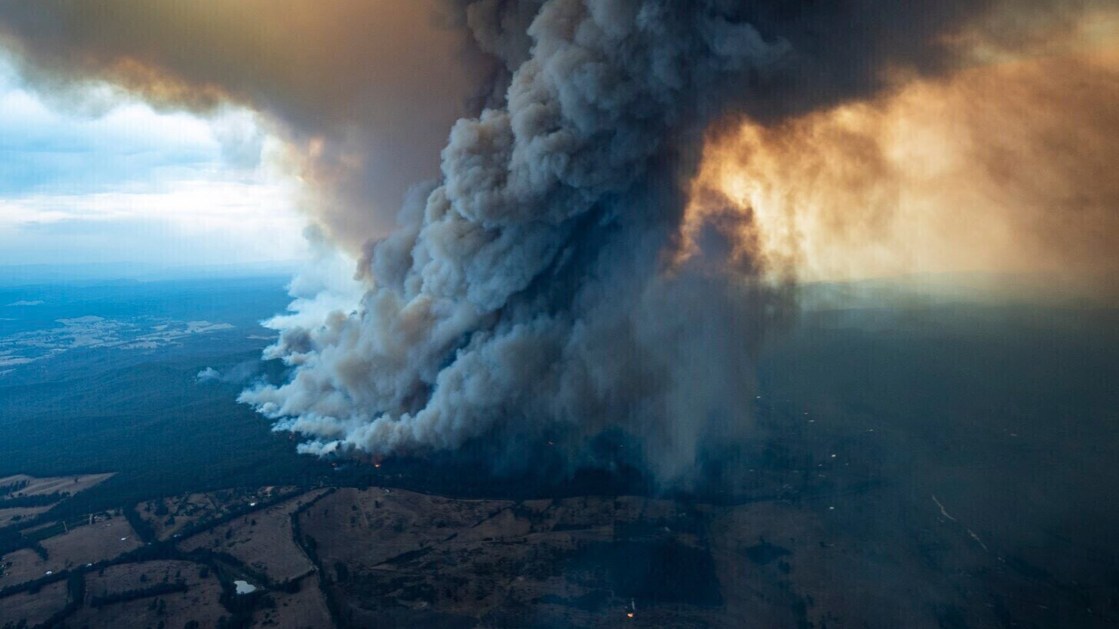
GAZETTE: Was there a main condition or disease that contributed to those deaths?
MICKLEY: For our study we relied on well-known, well-established relationships between particulate matter and health outcomes that people have developed over the years through long-term monitoring. The main diseases linked to particulate pollution are cardiovascular diseases like heart attacks and strokes, followed by pulmonary disease, and, in kids, pneumonia. At first glance, it looks like the levels of pollution experienced by some Australians because of the recent fires may be on par with what we saw in some areas of Equatorial Asia in 2015. We have not yet done any quantitative analysis, though. And Australia is much less densely populated than Equatorial Asia, so we would expect fewer deaths.
GAZETTE: In your research, did you find there was a particular length of time someone needed to be exposed to this kind of poor air to suffer the long-term health effects?
MICKLEY: The longer you are exposed, the more likely you are to get a health impact. In Equatorial Asia, the smoke lasted for weeks. In our study, we averaged exposure over the year to determine the health impacts over the following year.
GAZETTE: How long does it take the air to clear from these kinds of events?
MICKLEY: That’s a good question. For much of the world, air quality returns within days to normal conditions because the wind will carry away the plumes, and the fire is dead. However, if there is peat in the soil, which you often see in tropical forests, that peat can smolder for weeks. So in these areas the fires need not just to be controlled, but actually extinguished. Then, the smoke will die down pretty quickly.
GAZETTE: Do you think these fires in Australia foreshadow the kinds of fires we could see in this country in the future?
MICKLEY: Yes, I do. If you look at the history, Australia and other areas like the western U.S. have gone through large climate changes in the past, maybe 500 to several thousand years ago. These are what we will call natural variations in climate, sometimes accompanied by very severe droughts. I was recently looking at records of charcoal in lake sediment, which are made by bringing up cores of dirt from the bottom of a lake. These records provide a sense of when fires occurred because you can see layers of charcoal indicating that there was regional fire at that time. In lake sediment from Tasmania, an island state off of Australia’s southern coast, it looks like there was tremendous fire activity occurring periodically over the last 2,400 years. But the authors of the paper examining these records stress that just because intense fire activity comes naturally from time to time, human-caused climate change could also bring back some of these same conditions experienced in the past. But this time there may be no return to normal conditions, at least not for a long time. That is, as we pump more carbon dioxide into the air, and temperatures rise, some regions, particularly Australia, are expected to get much drier, and these weather conditions will likely persist. Carbon dioxide lasts a very long time in the atmosphere — centuries, so things don’t look good. The increase in temperatures alone evaporates the moisture in the soils. Combine that with a drought, and you have even drier conditions. This dryness turns the vegetation into a fuel that can feed the fires very well, as we’ve seen.
The Daily Gazette
Sign up for daily emails to get the latest Harvard news.
"term" - Google News
January 28, 2020 at 01:37AM
https://ift.tt/38KcOlP
The long-term effects of wildfires - Harvard Gazette
"term" - Google News
https://ift.tt/35lXs52
Shoes Man Tutorial
Pos News Update
Meme Update
Korean Entertainment News
Japan News Update
Bagikan Berita Ini

















0 Response to "The long-term effects of wildfires - Harvard Gazette"
Post a Comment